Product Bundling Examples And Strategies To Try + Branding Proper Use
We touched on a few different styles of bundling earlier while discussing the types of products to include in retail bundles, but let’s go more in-depth now. Below are 4 of the most common retail product bundling strategies.
1. Leverage pure bundling
Whether it’s in a brick-and-mortar or an eCommerce store, there are always products that don’t sell as well as others. This could be due to price, product positioning, packaging, or a slew of other factors. As a more long-term plan, you can certainly implement some pricing strategies to spur sales of these products, but in the short term, one of the most effective strategies to accelerate sales is through product bundling.
See Related: How to Price a Product
Pure bundling is an example of a product bundle that works best to push slow-moving items. Pure bundles are combos of the same product or different products that shoppers can’t buy individually. Some examples of this are sets of hair dryers with different detachable heads or televisions with remotes. SquattyPotty, the FDA-approved pooping accessory manufacturer, has mastered this strategy. They used it for Invisibrush, their proprietary toilet brush + brush holder set, complete with a spare brush.
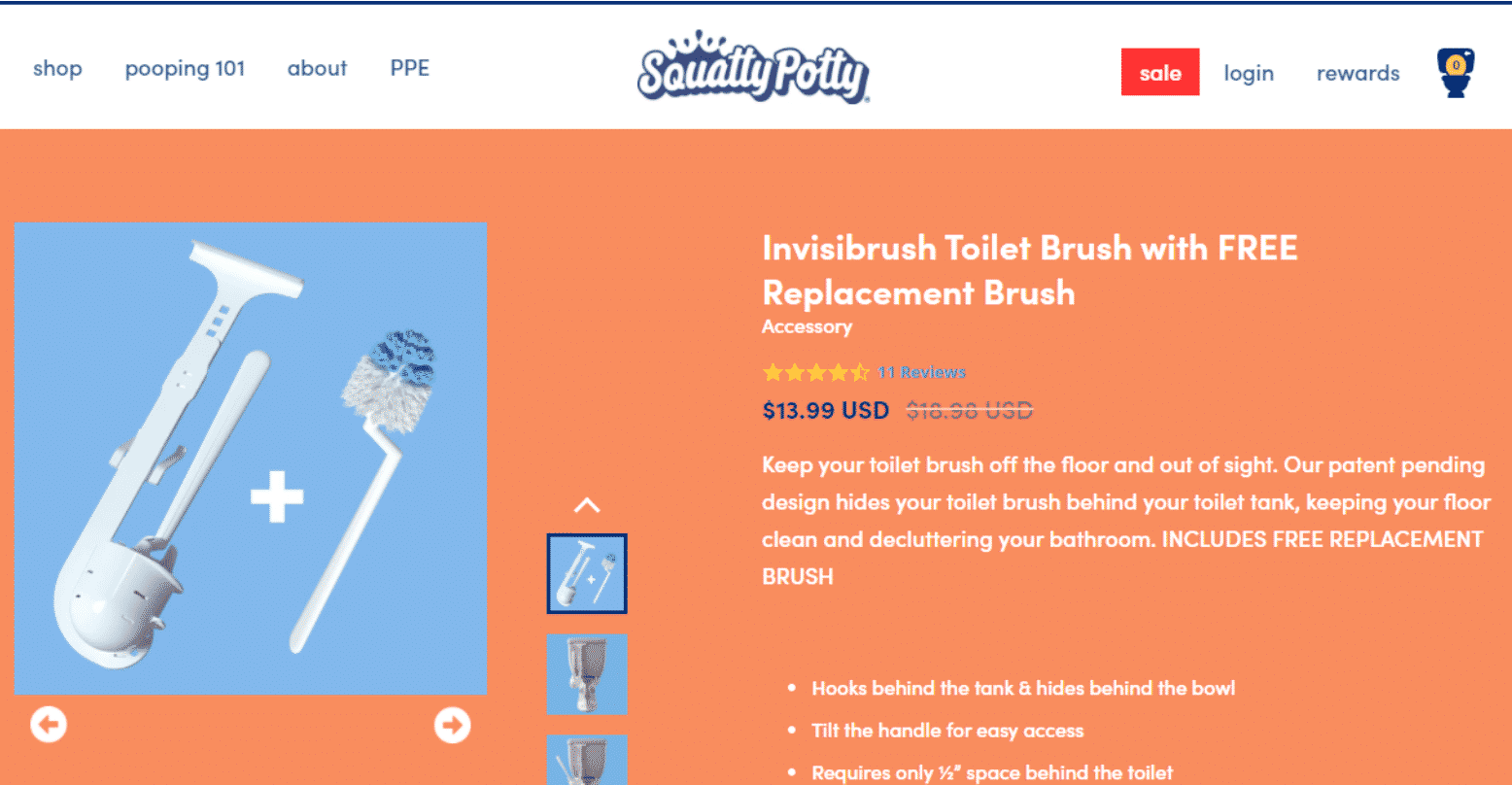
Given that a single buyer rarely purchases only the toilet brush and holder set, this is added to a bundle with the Squatty Potty.
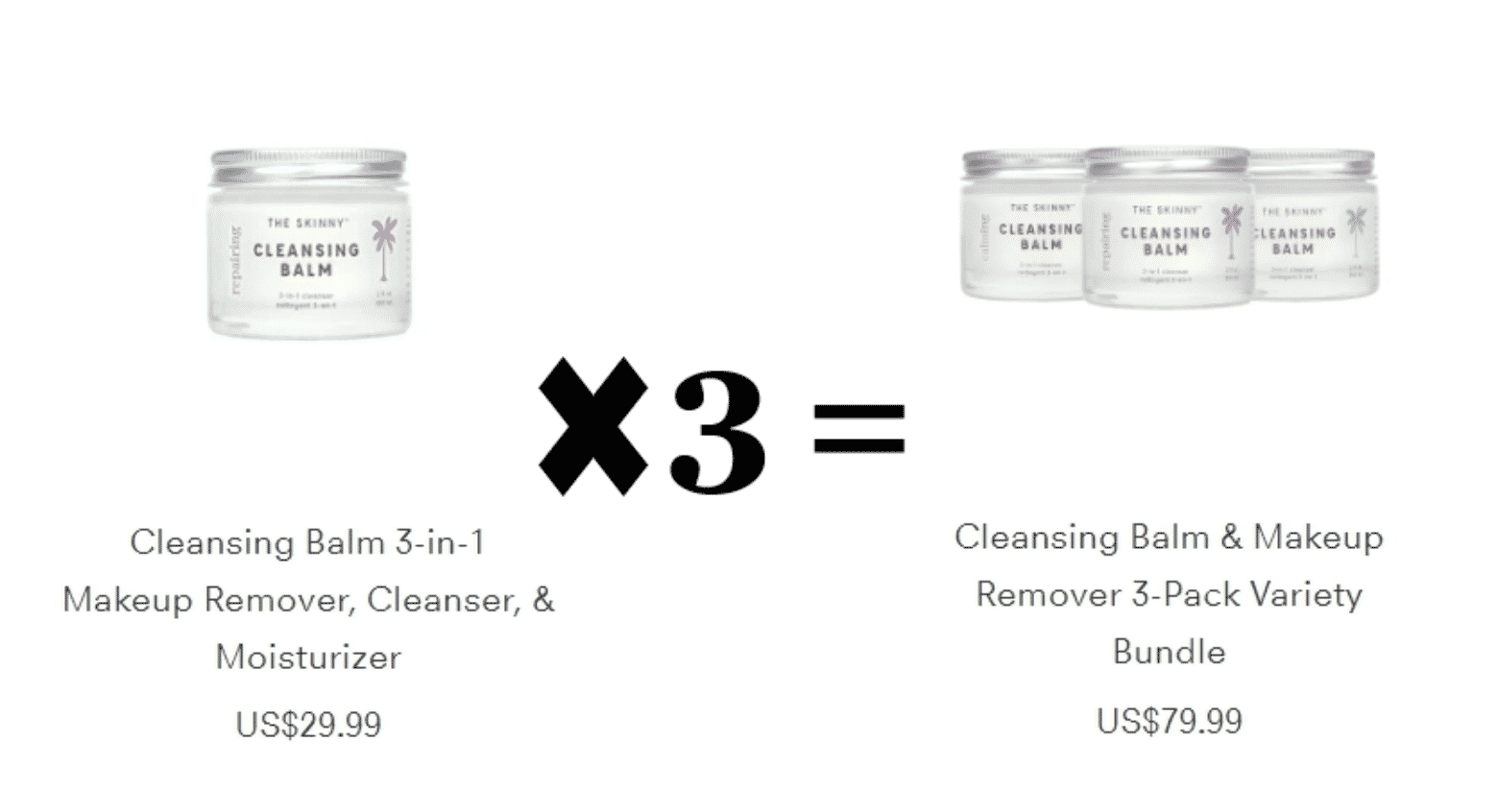
Skinny & Co’s 3-Pack Makeup Remover Balm is another example of a pure bundle. In this case, it’s a multiple-pack of the same product.
2. Use subscription boxes
Subscription boxes are bundles in their own right, not just for online retailers. Many brick-and-mortar retailers have launched their own subscription box services. WineCollective is just one example of a brick-and-mortar store that utilizes subscription boxes for education and product selection. The company eliminated decision-making difficulties from the buying process after realizing that some in-store customers struggled to get the right bottle.
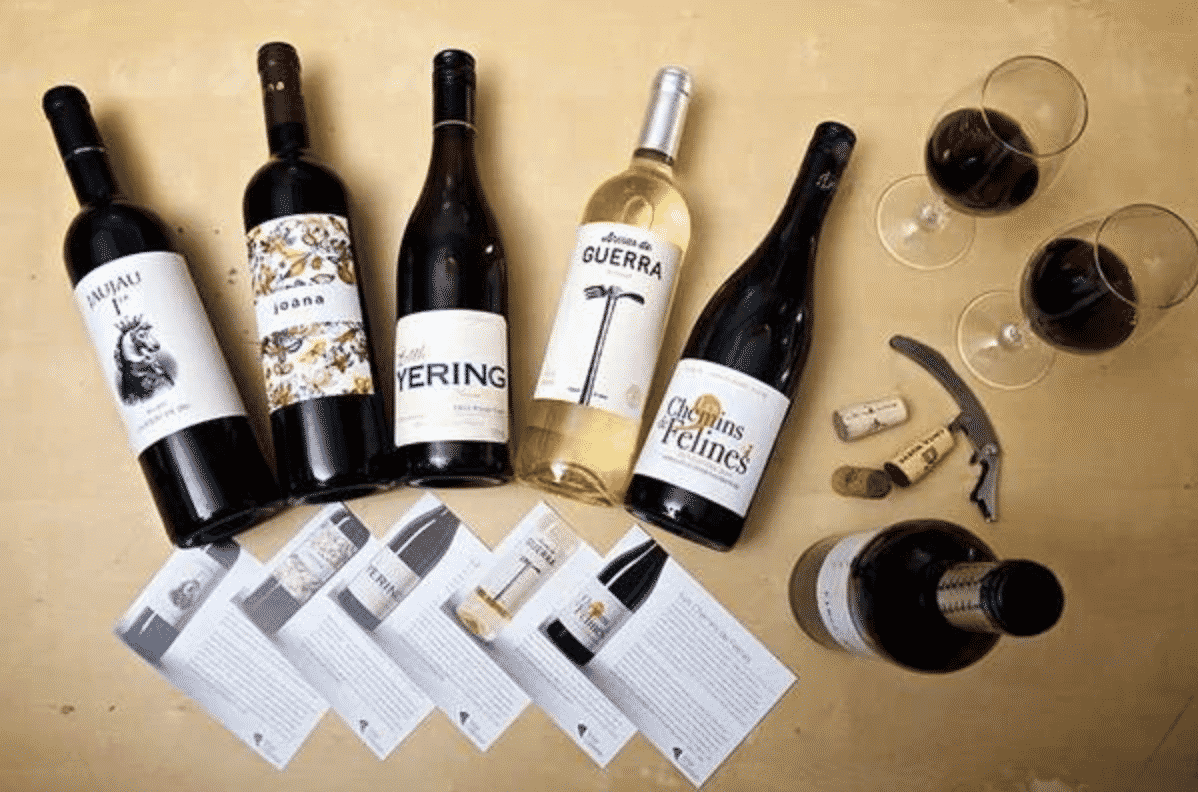
This allows customers to subscribe to crates of select items while also enabling WineCollective to bundle products they see as a best fit, educating customers and elevating their taste while also taking some of the stress off of their decision.
3. Make seasonal shopping easy
Bundles receive special attention during vacations and sales promotion days, such as Black Friday and Cyber Monday. As the term suggests, seasonal bundles are examples of product bundles built around special seasons and vacation themes. Consider some of the most popular times for seasonal bundles: Easter bundles, Fourth of July bundles, Chinese holidays, Black Friday/Cyber Monday, during the Christmas season, or Valentine’s Day. But why limit your bundles to only special occasions. Think about offering them year-round. This allows customers to save money on these seasonal offers at any time of the year, not just on special dates. You can still add some urgency to the deals, too. Set specific deadlines and include a countdown timer at your eCommerce store.
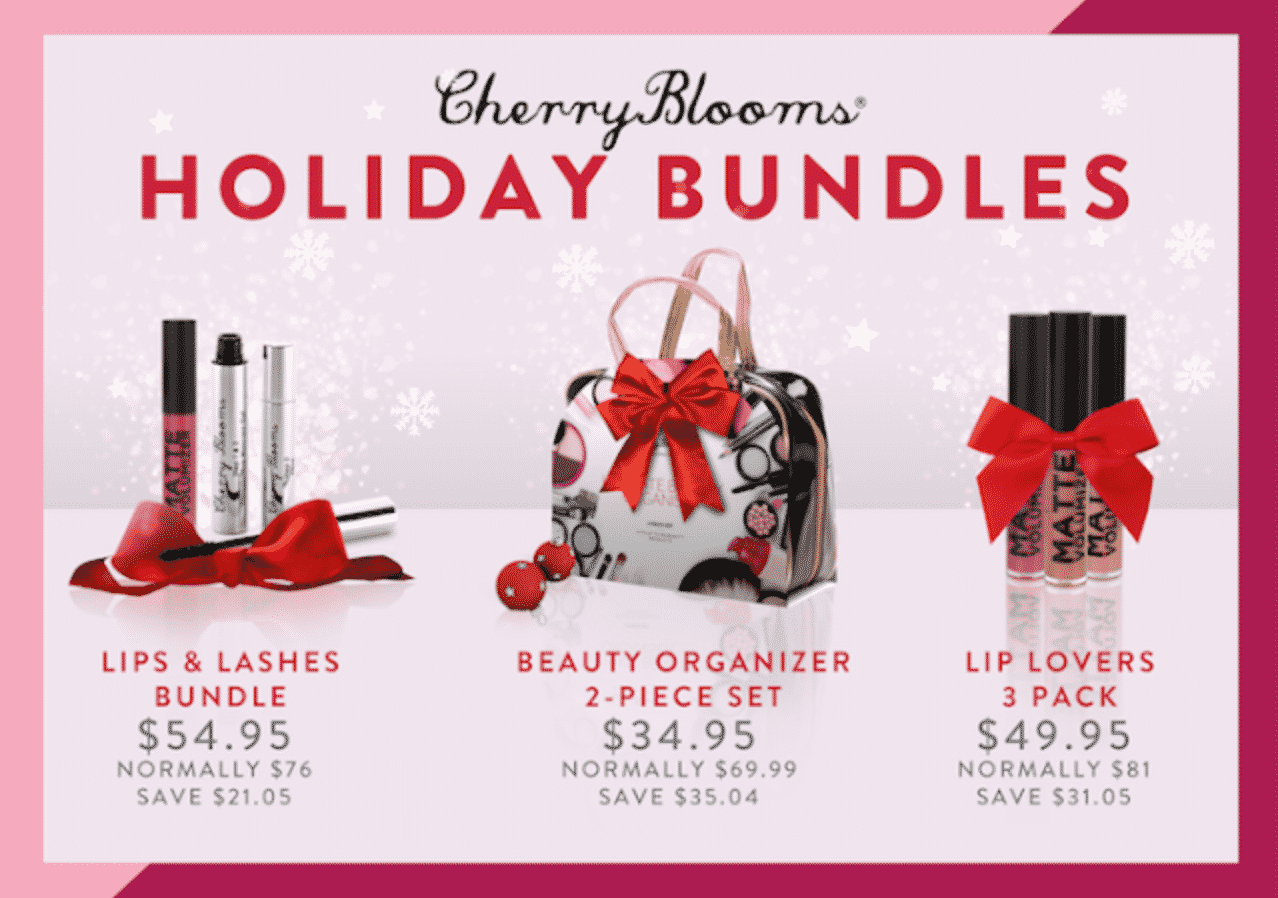
Here’s a great example of a seasonal bundle from retailer Cherryblooms, which sells bundles of beauty kits available exclusively during the holiday season.
4. Get your customer into the DIY mode
Do-it-yourself (DIY) bundles let buyers choose the products they want to be included in their bundle. DIY bundles can offer a number of benefits:
- Selling to a broader range of buyers
- Improving buyer satisfaction
- Providing your customers with an exceptional brand experience
As you may have guessed, DIY bundles have proven very successful in the fashion industry. However, do-it-yourself bundling can also be used effectively for many other product categories, like technology products, where shoppers can choose needed accessories to accompany their primary purchase (smartphones, computers, drones, etc.).
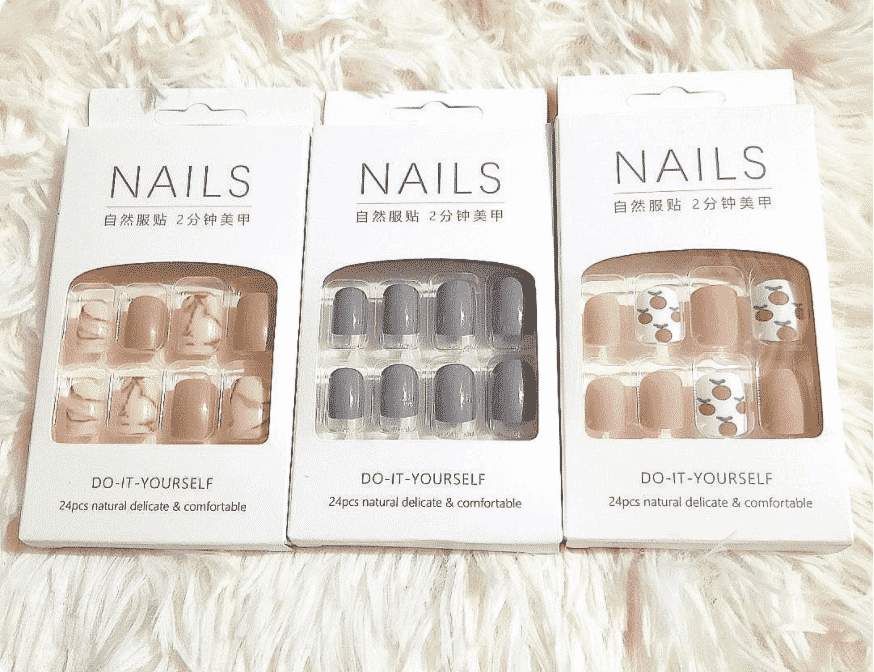
Another example of a DIY bundle is this bundle offered by casual fashion retailer Culture Kings.

5. Mix low-selling items with high-selling ones
A common product bundling tactic is to combine high-margin items with low-margin items in order to create a more attractive price for the bundle. Buyers looking to purchase a high-demand item will see the bundle as a great deal and be more likely to close the deal. For example, you have a French press in your store that is selling very well and a coffee blend that does not sell at all. Bundle these two products together to make an attractive package! Also, if you find that an item is very hard to sell, try using it to get your customers to take action. Small inducements can be very effective in getting the results you want.
Best Practices For Marketing Your product Bundle
There are many ways to promote your product bundles. Here are some common strategies you can use:
1. Display the discount information prominently
When your bundle is intended to offer a discount or added value, it’s critical to highlight this information on your product page or in your store and as part of your marketing efforts. Making the discount a key part of the bundle reminds shoppers that they get a good deal. As a result, it can spur consumers to make more purchases.

2. Use your bundles for gift guides
Promoting bundles around the holidays is another classic method. Many companies create a landing page for gift guides, which can be promoted via email, social media, and in-app. Below is an example of the mattress company Purple promoting its bundles as Valentine’s Day gifts:
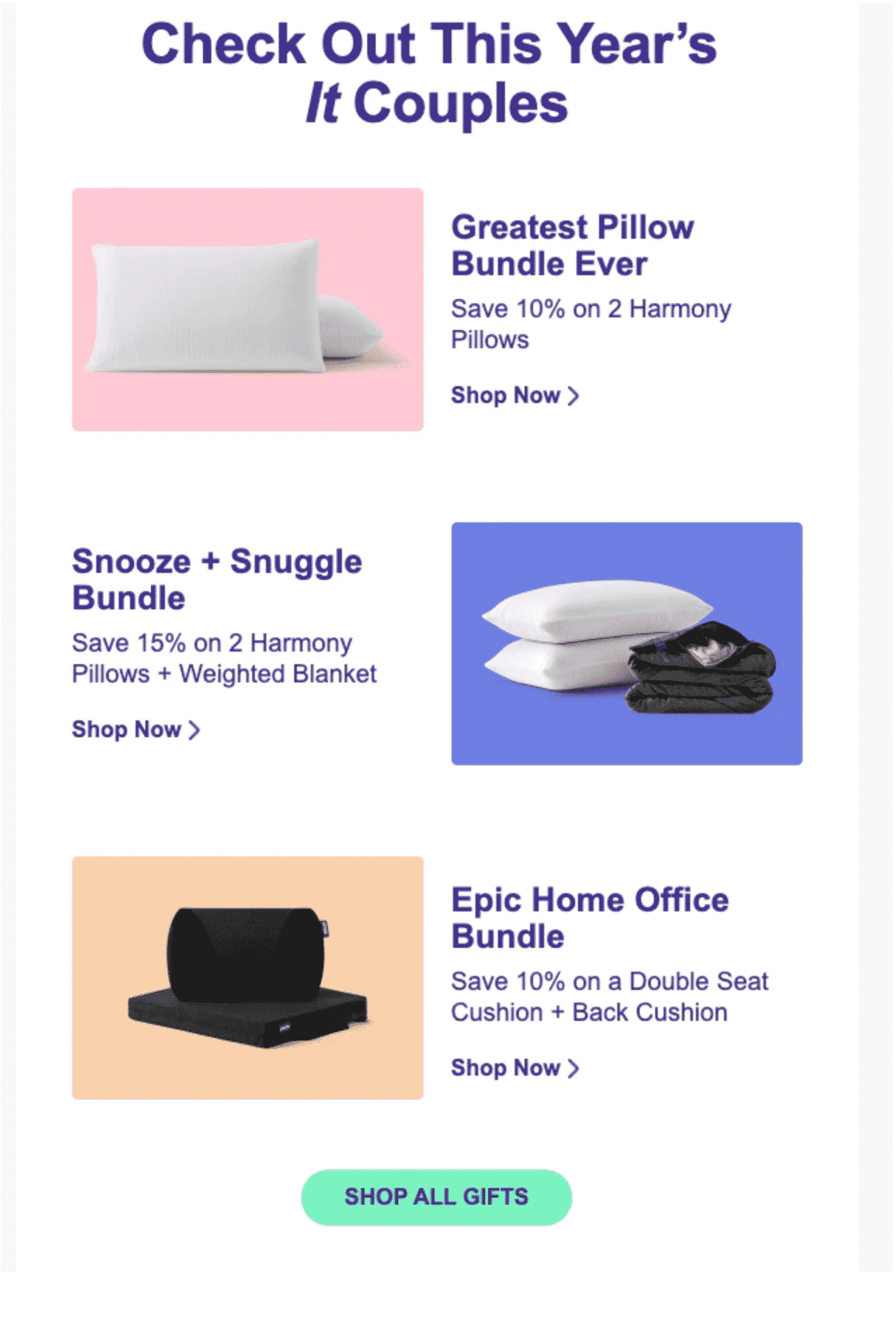
3. Offer your bundles at checkout
By offering a bundle at the checkout, you can help a customer purchase multiple items. In a store, the salesperson may mention that if the customer adds an additional item to their purchase, they get a 15% discount on all items. If you have an eCommerce store, this can be presented as a message during the checkout process.
See related: 8 Ways to Market the Retail Checkout Counter and POS Area
